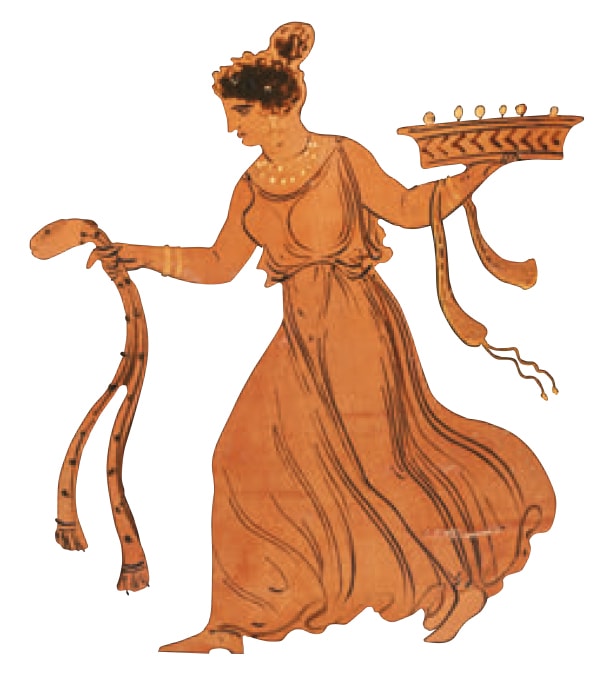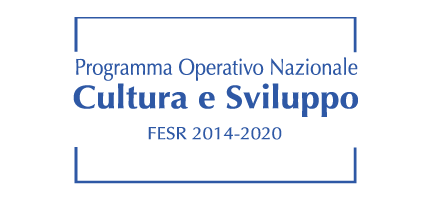MitoMania. Rediscovering stories about men and heroes
by Eva Degl'Innocenti, Anna Consonni, Luca Di Franco, Lorenzo Mancini
EXHIBITIONS AND EVENTS
‘The MitoMania Exhibition. Rediscovering stories about men and heroes’ speaks of objects illicitly removed from their context, which thanks to the commitment of the Carabinieri for the Protection of Cultural Heritage, have finally been returned to the territory where they were once produced. The masterpieces of Apulian red-figure vase production, which flourished in Apulia between the second half of the 5th and the end of the 4th century B.C., have been returned to Italy from various overseas museums to which they had been illegally exported.
For the first time you can admire them all together at the National Archaeological Museum of Taranto, the city that saw the birth of Apulian ceramic production.
OPENING HOURS OF THE EXHIBITION
from 8.30 to 13.00 and from 15.30 to 19.30.
Not just ‘returned items’:
the "lost context"
“MitoMania. Rediscovering stories about men and heroes” is not only an exhibition on the albeit very important issue of the protection of archaeological heritage from the risks of dispersion to which it is subjected. It is also an attempt to compensate for the loss of the context in which the items were found, which is unfortunately difficult to recover, by reconstructing the cultural context in which the vases were produced, circulated and used and which makes them something more than merely marvellous works of art. It is only by drawing on this “lost context” that the images painted on the pottery can once again tell their stories. Rediscovered stories about men and heroes who use the language of myth not for a simple “mania”, as the title of the exhibition provocatively suggests, but as a means for sharing values and building identities between the Greeks and the indigenous world.
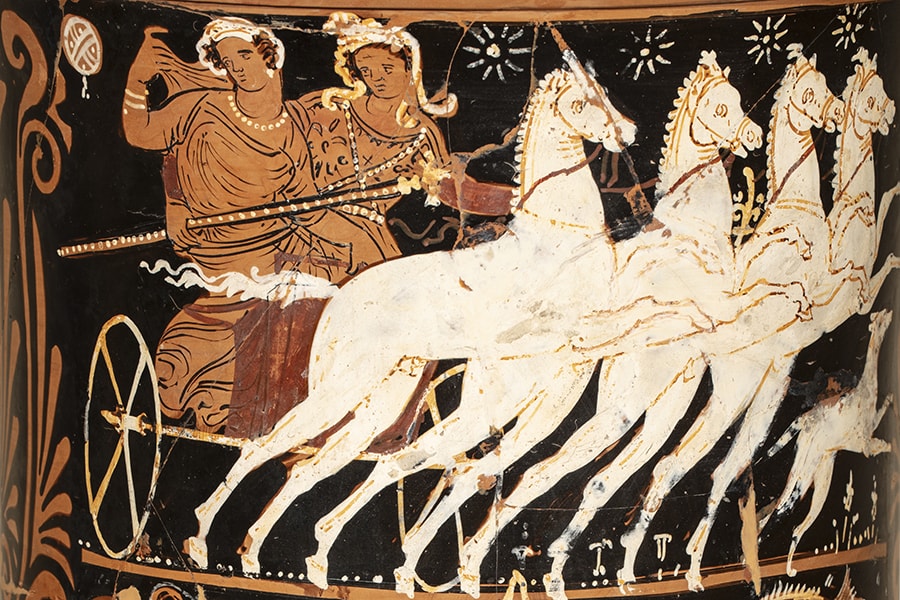
The exhibition is divided into three sections, dedicated respectively to the evocation of the “lost context” through the narrative of the stories about the men (section I) and about the mythology heroes (section II) depicted on the vases, and to the activities of the Carabinieri for the Protection of Cultural Heritage (Section III).
SECTION I:
Apulian ceramics and funerary ideology
Over 90% of the Apulian vases whose context of discovery is known come from burial grounds. The tomb, however, does not only represent their final destination. The characteristics of these vases suggest that they are objects conceived and designed to be exhibited during funeral rituals and then placed in the tombs.
In the first section the relationship between Apulian ceramics and the funerary aspects are analyzed at the different levels in which they materialize, from the shape of the vases to the scenes that are depicted. The latter show young men and women bringing offerings to the tomb, evoked by a stele or a column. On the two large spiralling craters attributed to the Painter of the White Sakkos, the aedicola that marks the presence of the tomb has an architecturally more complex form: that of a small temple (naiskos) inside which sits the deceased in the form of a statue.
The scene of the offerings at the tomb are flanked by representations of the Hereafter and by mythological scenes: it is only by considering these images in their entirety, as a single large figurative text, that it is possible to capture fragments of lost and rediscovered stories. Stories of men and women grappling with key moments in their social existence, with the fears and hopes prompted by destiny that are common to all human beings.
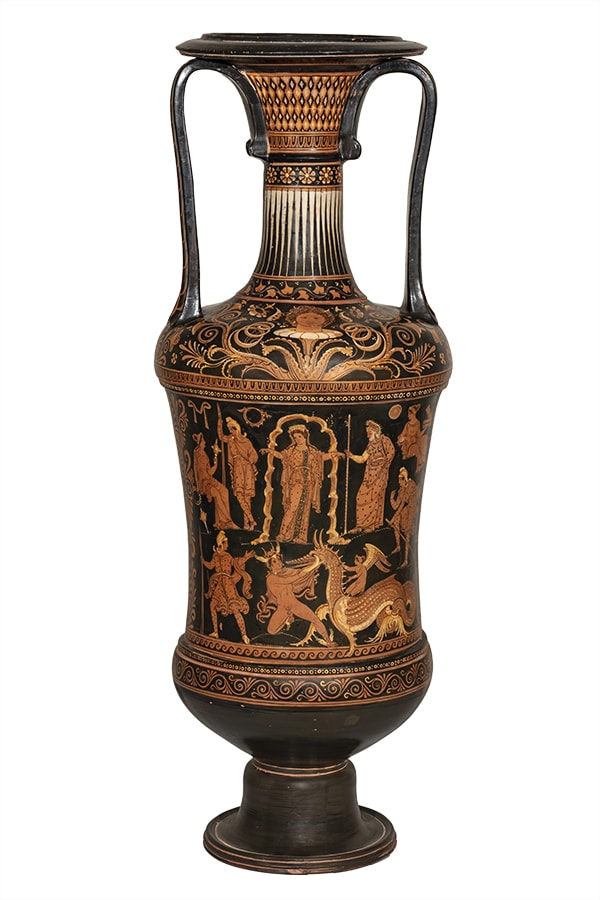
SECTION II:
Myth and theatre in Apulian ceramics
Drama was an inexhaustible source of images and stories for the ancient Greeks. Among the finds returned to the National Archaeological Museum of Taranto there are some vases characterized by a particular and refined iconography, centred on the narration of mythological episodes which have been interpreted as being related to the world of the theatre. This intense and reciprocal relationship between drama and paintings on vases, much debated as to the preciseness of the interpretation, is well documented in the three vases depicting the myth of Andromeda, in which two different moments of the story are illustrated as slabs of a single frieze. Our fragmented knowledge about the tragedy by the Athenian Euripides, staged in 412 B.C., offers the opportunity to focus our attention on the osmosis between the two worlds, recalling the story of a girl offered as a sacrificial victim to a sea monster but saved by the intervention of the hero Perseus.
The dinos (roundish vase) attributed to the Painter of Dario introduces the theatrical theme – this time perhaps linked to a comedy – through the illustration of the episode of the killing of Busiris, the Egyptian king who used to sacrifice the foreigners who happened to travel across his lands, by Heracles, the hero who “civilized” the uncivilized.
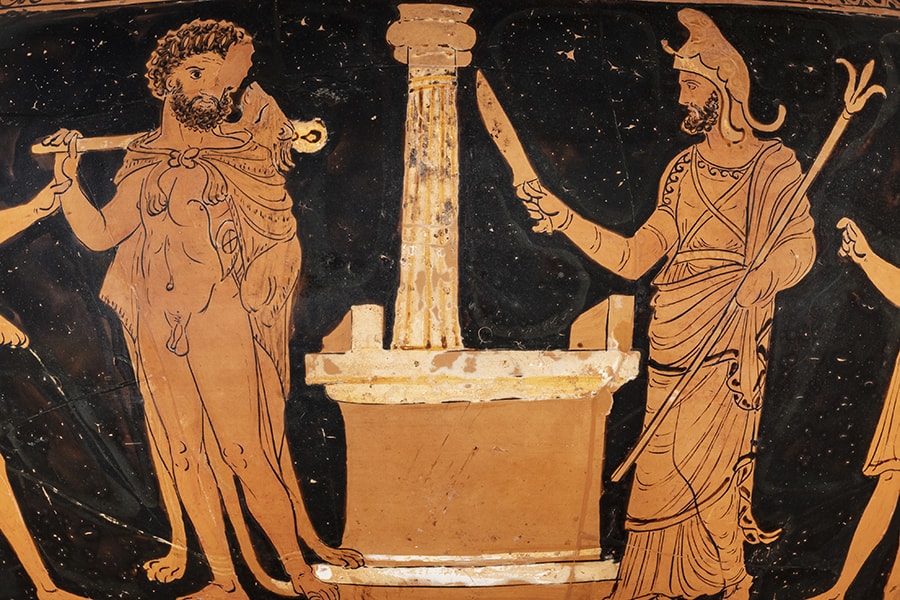
SECTION III:
Action taken by the Carabinieri: items returned to the MArTA
The Carabinieri Unit for the Protection of Cultural Heritage celebrates its first fifty years of activity in 2019. Functionally part of the Ministry of Cultural Heritage and Activities, the Carabinieri Unit cooperates directly with the Minister carrying out tasks concerning the security and protection of Italian cultural heritage through the prevention and repression of any violation against the law, in addition to being an information hub for all enforcement agencies.
The vases exhibited in the exhibition have been returned to Italy following complex international investigations which started back in the 1990s. These activities led to the warehouses of the free port of Geneva where the Carabinieri found an impressive amount of archaeological finds of illicit origin, crammed in warehouses or displayed neatly in rooms for sale negotiations.
Parallel to the trial proceedings that ensued from these investigations, the Italian Ministry of Cultural Heritage and Activities and Tourism, through intense cultural diplomacy carried out in synergy with the State Attorney and the Ministry of Foreign Affairs, worked out specific restitution agreements with some American museums that had illegally acquired finds of Italian origin.
And so today, these treasures can be admired in the region where they were produced and which preserved them for centuries.
